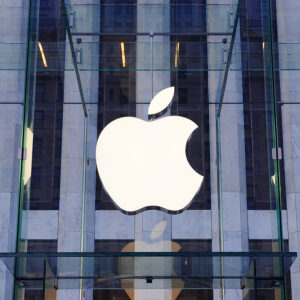The first Friday in February might have been a momentous day in the 12-year-old antitrust case against Apple, as U.S. District Judge Yvonne Gonzalez Rogers allowed tens of millions of Apple customers to pursue a class action against the company.
The case revolves around Apple’s App Store and the allegation that the company monopolized the market for iPhone apps by prohibiting purchases outside its App Store, leading to higher prices.
The case originated from several class-action suits filed soon after the introduction of the iPhone, which were later combined into a consolidated case. Apple has argued that it has not violated antitrust laws, considering itself a reseller of apps and its 30 percent fee a fair and reasonable commission on the sale of those apps.
In 2013, District Court Judge Denise Cote in Manhattan found Apple guilty of violating federal antitrust law, citing “compelling evidence” of the company’s involvement in a conspiracy with publishers.
However, various parts of the case were initially dismissed by the court. The case was later reopened, and in March 2022, Gonzalez Rogers refused to certify a class action against Apple but then changed her mind when the class was narrowed to include only people who spent $10 or more in their Apple account.
It’s hard to believe that this case was first filed in October 2012 — not confidence-inducing for those who think the legal system can be far too slow.
Anyone who uses an iPhone knows that Apple is essentially monopolizing the market for iPhone apps by banning purchases outside its App Store. The plaintiffs in the class action argue that Apple’s actions have led to higher prices for apps.
While this 12-year-old lawsuit took another slow step forward at the beginning of February, at the end of January, a related lawsuit was filed against Apple.
Three iPhone buyers are claiming that Apple and Google (who is not involved in the lawsuit) have a smartphone duopoly. These smartphone manufacturers have allowed Apple to inflate prices for their hardware — the iPhone itself.
The reason this should be seen as a related suit is because the class in the new suit is alleging that Apple struck agreements with web browsers to exclude third-party apps not sourced from the App Store. This allows Apple to keep competitors out of the marketplace.
The consumers suffer because how Apple operates deprives choice. A good analogy with the App Store is Nespresso pods.
Before Nespresso lost intellectual property protection on its Nespresso coffee pods, only it could produce the little pods that store the ground coffee to make Nespresso. Now, anyone can produce a Nespresso pod filled with their own coffee. Many coffee companies do this, creating options for Nespresso users and the market to set the price range for pods that work with Nespresso.
This is all iPhone users want. It’s not that they don’t want to have the App Store as an option to purchase and download apps; they merely want a collective marketplace, which the legal system is supposed to help protect.
We can be forgiven if we ask whether this will take an additional 12 years or more to settle, and we can allow ourselves to be disappointed that as these cases go on, we still have no choice but to consume iPhone apps on the App Store.
Part of why consumers feel particularly helpless about dealing with the App Store is that we get so invested in the Apple ecosystem. People who love their iPhones don’t want to switch hardware, not that the app options are much better with anyone else’s phones.
We love our iPhones because they’re familiar and comfortable, which is a great corporate foundation upon which to layer antitrust behaviors. The more difficult it is to leave Apple, the more traction Apple has historically had, keeping us tethered to both our phones and the app stores.

